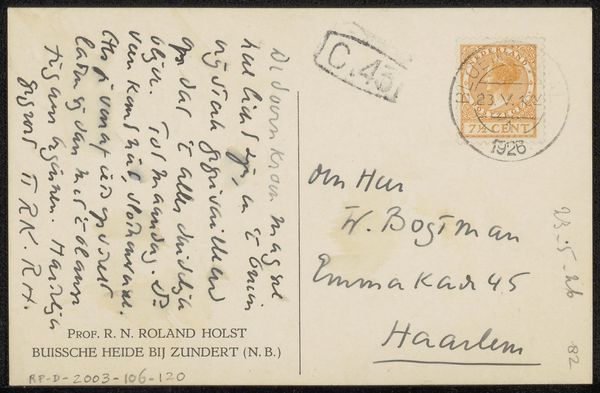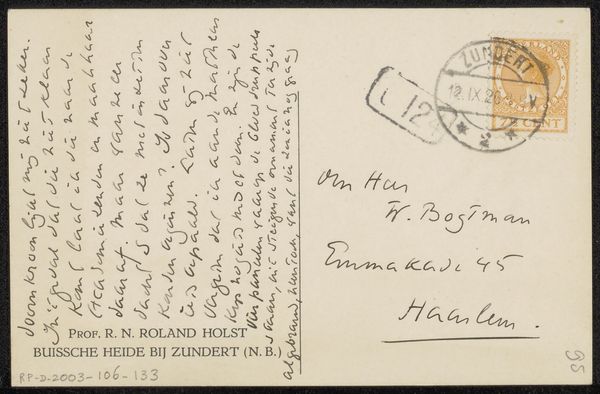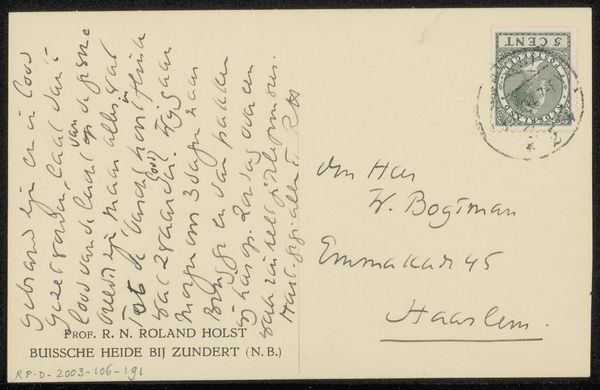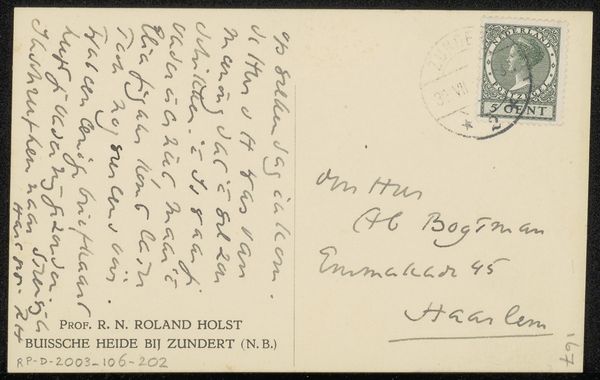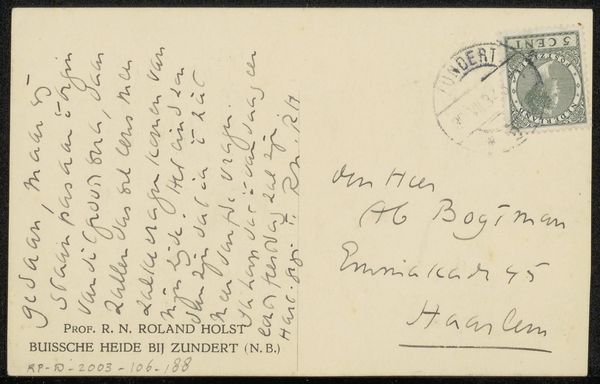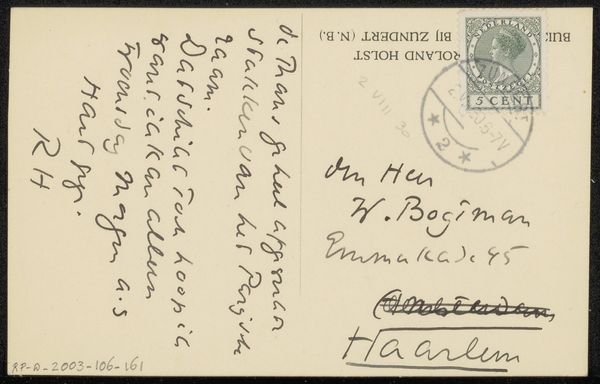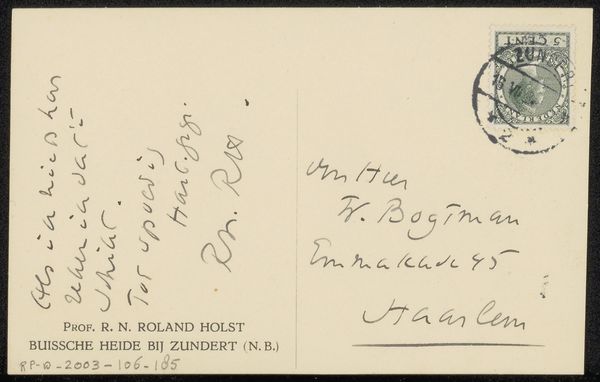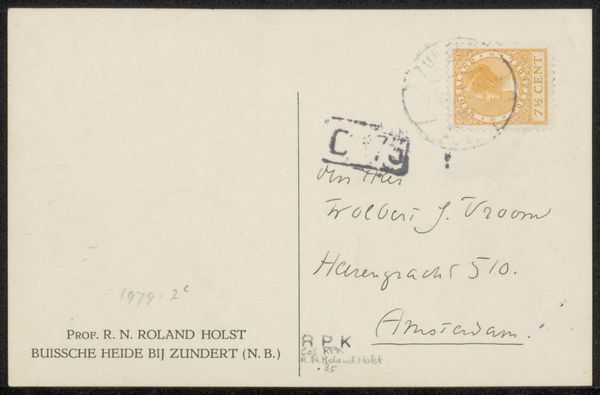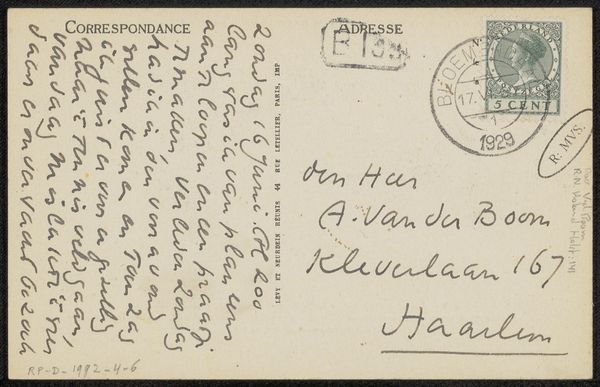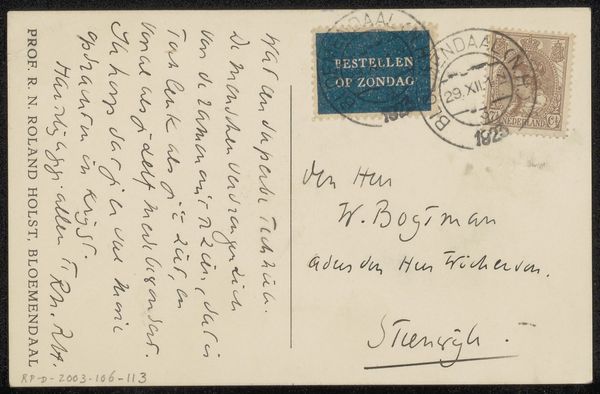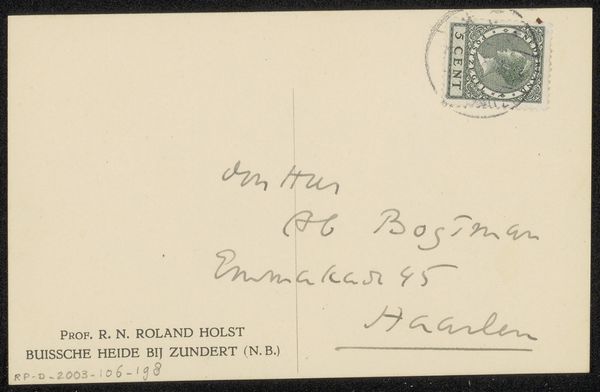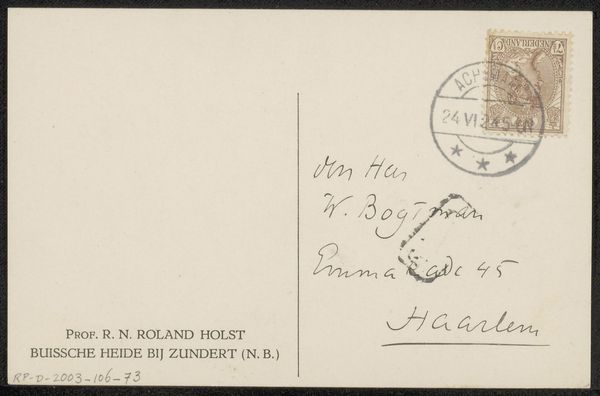
drawing, print, paper, ink, pen
#
drawing
#
hand-lettering
# print
#
pen illustration
#
hand lettering
#
paper
#
personal sketchbook
#
ink
#
pen
#
calligraphy
Copyright: Rijks Museum: Open Domain
Curator: Here we have "Briefkaart aan Willem Bogtman," a postcard created sometime between 1926 and 1928, crafted by Richard Nicolaüs Roland Holst. It's ink on paper, held in the Rijksmuseum collection. It feels quite intimate. What's your initial take? Editor: Immediately, I’m struck by the density of script and overall communicative effect despite its small scale. I see not just words, but almost woven lines and abstract shapes dancing across a tan paper ground, creating layers of visual intrigue, a dialogue, in a sense. Curator: It is very personal. Beyond its aesthetic feel, think about the act of handwriting in the early 20th century, before immediate digital messaging. Writing then had more social weight. It took longer to craft a physical object, making its recipient and message all the more impactful. I mean, who was Roland Holst writing to and what were their social circumstances? What type of relationship did they cultivate through letter writing? Editor: I’m seeing visual cues and patterns of human expression. The ink’s varying weight as it marks the paper reveals pressure, hesitations, a trace of Roland Holst's hand as he makes each letter. Also, it uses calligraphy that carries cultural meaning. Each stylized curve and connection adds a visual narrative beyond its literal message. I’m eager to know how his choices influenced the recipients emotional reading of its message. Curator: Well, his words speak of “hangr aan cukaian”... it feels intensely coded. He speaks about waiting and also of intimacy between at least two actors. We can also see this intimacy within the frame through his distinct word choices that may only mean something to him and his intended recipient, creating a shared world between artist and viewer through personal references. The placement and the relationship the script and hand-lettering have on this humble piece of paper have so many hidden messages! Editor: Indeed, the art becomes more about these emotional threads and symbolic exchange between Roland Holst and Willem Bogtman that transcends everyday understanding. How powerful that visual symbols could embody a memory. Curator: Looking at art through the lens of correspondence emphasizes art's performative and intimate possibilities, providing insight to individual lived experience and its significance beyond mere visual display. Editor: It truly elevates a simple note into a potent record.
Comments
No comments
Be the first to comment and join the conversation on the ultimate creative platform.
